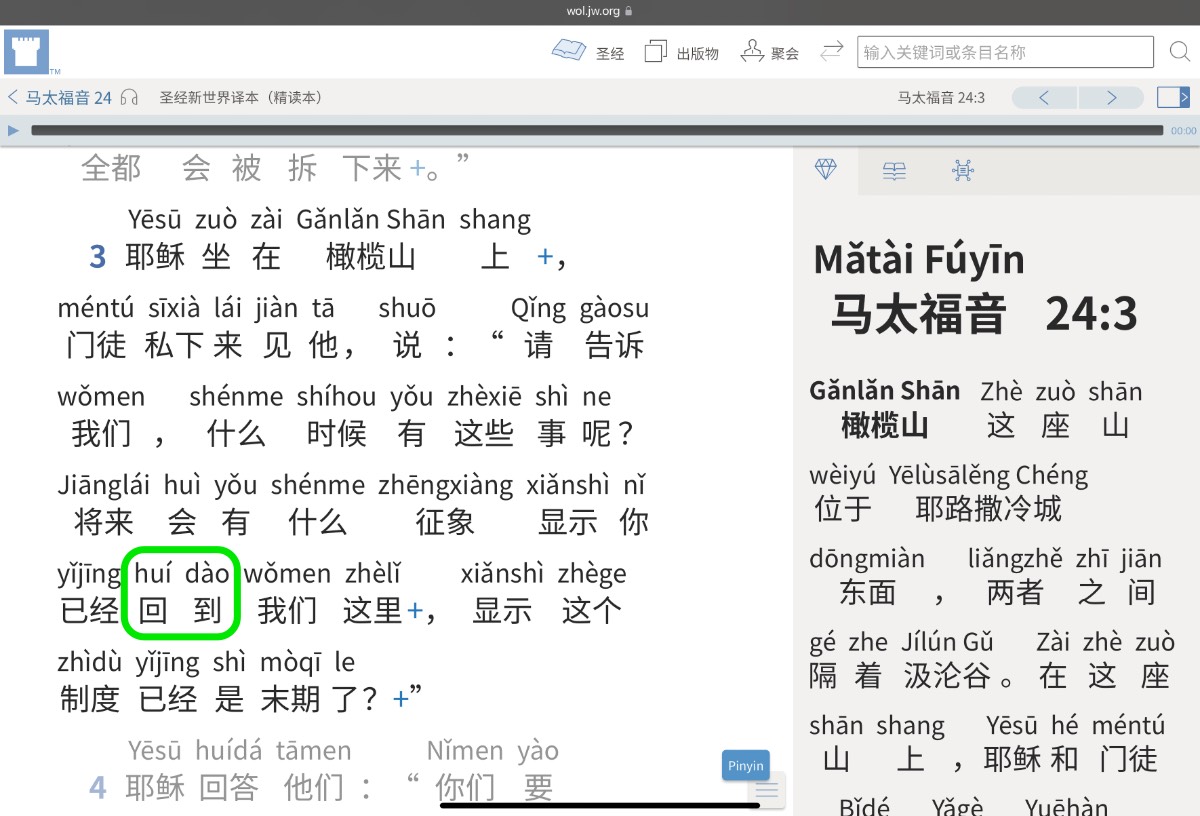tǐyàn (tǐ·yàn {bodily → [personally]} · test; examine; check; verify → [learn through practice/personal experience] 体验 體驗) ← Tap/click to show/hide the “flashcard”
One of the publications that is now recommended to be used on Bible studies is the Yǒngyuǎn Xiǎngshòu Měihǎo de Shēngmìng—Shèngjīng Kèchéng Tǐyàn Bǎn ((Yǒng·yuǎn Eternally · {Far (in Time)} 永远 永遠) (Xiǎng·shòu Enjoy · Receive 享受) (Měi·hǎo Beautiful · Good 美好) (de ’s 的) (Shēngmìng Life 生命)—(Shèng·jīng Holy · Scriptures → [Bible] 圣经 聖經) (Kè·chéng Lessons · Procedure → [Course] 课程 課程) (Tǐ·yàn {Bodily → [Personally]} · Testing → [Learning Through Personal Experience] 体验 體驗) (Bǎn ({Printing Plate (or Block)} → [Edition] 版) → [Enjoy Life Forever!—Introductory Bible Lessons (lffi)]) (Enjoy Life Forever! (lffi)) brochure. Looking at the Mandarin title of this brochure, you may have wondered: What does “tǐyàn (tǐ·yàn {bodily → [personally]} · test; examine; check; verify → [learn through practice/personal experience] 体验 體驗)” mean?

You may surmise that “tǐyàn (tǐ·yàn {bodily → [personally]} · test; examine; check; verify → [learn through practice/personal experience] 体验 體驗)” roughly corresponds with the “Introductory” in Enjoy Life Forever!—Introductory Bible Lessons, and you would be right. The match isn’t exact, though, and a look into the literal meanings of the morphemes in “tǐyàn (tǐ·yàn {bodily → [personally]} · test; examine; check; verify → [learn through practice/personal experience] 体验 體驗)” will help us to understand why, and to gain some insight into how the components of “tǐyàn (tǐ·yàn {bodily → [personally]} · test; examine; check; verify → [learn through practice/personal experience] 体验 體驗)” and of similar Mandarin words work together.
Morphemic Breakdown
As the Pīnyīn (Pīn·yīn {Piecing Together of} · Sounds → [Pinyin] 拼音) Plus information for “tǐyàn (tǐ·yàn {bodily → [personally]} · test; examine; check; verify → [learn through practice/personal experience] 体验 體驗)” shows us, its first morpheme “tǐ (body | {bodily [→ [personally]]} 体 體/体/躰)”, which literally means “body”, here means “in body” or “bodily”, or as we might say in English, “in person” or “personally”. The other morpheme “yàn (test; examine; check; verify 验 驗/騐)” means “test; examine; check; verify”. The word “tǐyàn (tǐ·yàn {bodily → [personally]} · test; examine; check; verify → [learn through practice/personal experience] 体验 體驗)” that these morphemes form together effectively means “personally test”, or “learn from practical/personal experience”.
“Kèchéng (Kè·chéng Lessons · Procedure → [Course] 课程 課程) Tǐyàn (Tǐ·yàn {Bodily → [Personally]} · Testing → [Learning Through Personal Experience] 体验 體驗) Bǎn ({Printing Plate (or Block)} → [Edition] 版)” in the title of the Mandarin Enjoy Life Forever! brochure does correspond to “Introductory…Lessons” in the title of the English Enjoy Life Forever! brochure, but a more exact English translation might be “Course Trial Edition” or something like that.
Representing the Self in Some Mandarin Words
The way “tǐ (body | {bodily [→ [personally]]} 体 體/体/躰)” is used in “tǐyàn (tǐ·yàn {bodily → [personally]} · test; examine; check; verify → [learn through practice/personal experience] 体验 體驗)” is an example of how in some Mandarin words, the physical body is used to represent the whole self. “Tǐhuì (Tǐ·huì {bodily → [personally]} · understand; know 体会 體會)” and “tǐtiē (tǐ·tiē {bodily → [personally]} · {stick to → [keep close to]} → [show consideration for; be thoughtful towards] 体贴 體貼)” are two fairly well-known Mandarin words that also use “tǐ (body | {bodily [→ [personally]]} 体 體/体/躰)” this way.
Another example of a Mandarin word in which the physical body is used to represent the whole self is a word that we as Jehovah’s people are quite familiar with: “xiànshēn (xiàn·shēn {offer → [dedicate]} · {body → [self]} | {offering of → [dedicating of]} · {body → [self]} → [dedication] 献身 獻身)”. This word literally means “offer body”, and effectively means “dedicate self”.
For convenience:
The direct link for the current generation Pīnyīn (Pīn·yīn {Piecing Together of} · Sounds → [Pinyin] 拼音) Plus resource for the Enjoy Life Forever! brochure is:
The direct link for the current generation Pīnyīn (Pīn·yīn {Piecing Together of} · Sounds → [Pinyin] 拼音) Plus resource for the Enjoy Life Forever! book is:
The short link for Chinese field language-learning links for the Enjoy Life Forever! brochure is:
The short link for Chinese field language-learning links for the Enjoy Life Forever! book is:
More Pīnyīn (Pīn·yīn {Piecing Together of} · Sounds → [Pinyin] 拼音) and Pīnyīn (Pīn·yīn {Piecing Together of} · Sounds → [Pinyin] 拼音) Plus web material based on the Mandarin Enjoy Life Forever! brochure and the Mandarin Enjoy Life Forever! book will be made available in the above-mentioned Pīnyīn (Pīn·yīn {Piecing Together of} · Sounds → [Pinyin] 拼音) Plus web resources as time allows.

